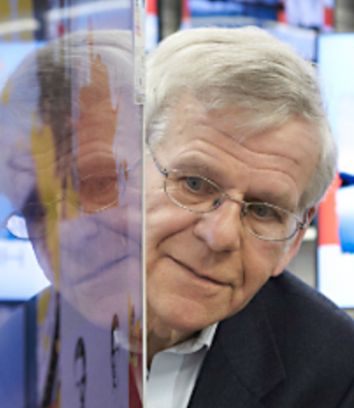LCD Man Wins Lifetime Recognition At Inventor Awards

Martin Schadt, (pictured) won this year’s Lifetime Achievement Award for his development of LCD screens
The European Inventor Award 2013 came to a climax in Amsterdam today with Martin Schadt (Switzerland) being awarded the top accolade for Lifetime Achievement as the inventor of the liquid crystal displays (LCDs) that surround us every day.
The annual competition, run by the European Patents Office, puts the visualisers of a range of innovative inventions in head to head battles across several categories of work. The judges have to compare the contribution made to society, the thinking behind the invention, and the economic benefit of each invention to come to their decision of who should win the award.
No ARM in it
This UK hopes were pinned on Sophie Wilson (pictured) to win the Lifetime award for her work developing the core of the Advanced RISC Machine (ARM) processors, now at the heart of many mobile devices, when she was employed by Acorn.
 At the pre-awards dinner in the Scheepvaart maritime museum in Amsterdam, Wilson told ChannelBiz her feelings about the nomination. “It’s very weird – especially as it concentrates on something I did 30 years ago and ignores all the other things,” she said. “Even landing in Amsterdam to come here for this ceremony I was still thinking, ‘This is unreal. Do they really mean me?’ Is this some sort of strange dream?”
At the pre-awards dinner in the Scheepvaart maritime museum in Amsterdam, Wilson told ChannelBiz her feelings about the nomination. “It’s very weird – especially as it concentrates on something I did 30 years ago and ignores all the other things,” she said. “Even landing in Amsterdam to come here for this ceremony I was still thinking, ‘This is unreal. Do they really mean me?’ Is this some sort of strange dream?”
Last year, Wilson, now chief architect at Broadcom, was named as Fellow of the Computer History Museum in California but this success was not to be repeated at the Inventor Awards.
Swiss physicist Martin Schadt created the world’s first flat-panel liquid crystal display in 1970 but he had taken out a basic patent ten years earlier. Working in a lab at pharmaceutical company F Hoffmann-La Roche in Basel, he discovered that jolting liquid crystals with electricity would cause their spiral molecular structures to ‘unwind’ and become opaque.
He then discovered that sandwiching the crystals between two plates of plastic attached to an electric grid allowed him to activate tiny sections of the grid and that individual “pixels” could be manipulated with electricity to alter their light transmission, making them appear either transparent or opaque.
The rest of the story is probably staring you in the face as you read this. LCDs are everywhere.
Results
In the other sections of the awards, the Research Award went to Patrick Couvreur and his team from Paris-Sud and Turin Universities for nano-capsules that attack, disrupt and kill individual cancer cells without harming normal tissue. The SME award was given to Pal Nyren from Sweden who developed a fast and inexpensive way of sequencing DNA strands.
Although the awards are European, there is a special award for non-European inventors who have filed patents in this region. This year Ajay Bhatt and his team who developed the Universal Serial Bus (USB) were awarded the prize.
New this year was a special people’s prize, the Popular Prize, voted for by online visitors to the European Patents Office’s website. The first winner of the award was Jose Luis Lopez Gomez from Spain whose redesign of high-speed train wheel axles has brought a smoother ride to many rail passengers.